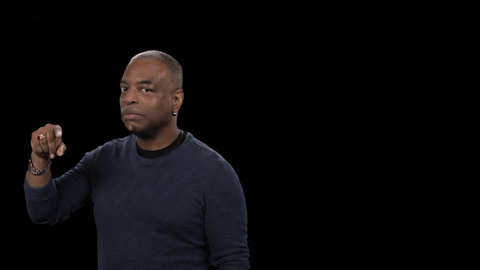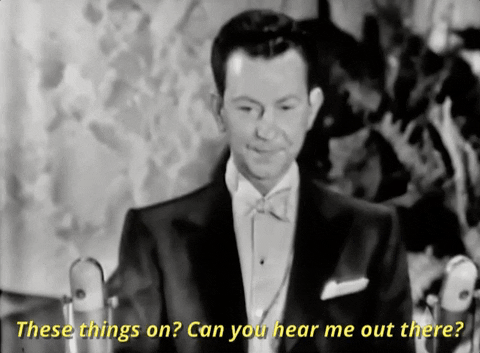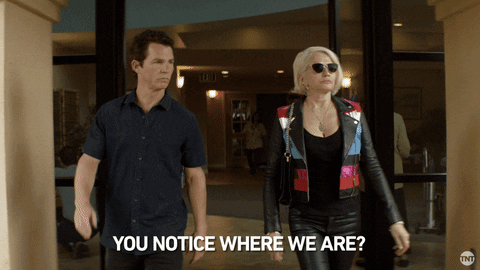The academic year has started, and operations are back in full force in the student affairs world.
You have probably already been asked to facilitate some sort of workshop, pop in for a session at a retreat, or are gearing up to present at a conference.
In one of my favorite facilitation resources, The Facilitators Guide to Participatory Decision Making, author Sam Kaner says, “it is the facilitator’s job to support everyone to do their best thinking”.

This framework really resonates with me when I design any type of curriculum. I ask myself questions like, “How can an activity connect the dots?”, “ What type of reflection can I introduce?”, and “How can I draw out the learner?” These questions help me think about how facilitation practices can connect the learner to the curriculum.
However, there is a fine line between presenting and facilitating. Presenting requires the dissemination of knowledge, while facilitation is a co-construction of knowledge.
The role of the facilitator is to promote a mutual understanding of the topic and encourage full participation. They encourage participants to search for inclusive solutions and reach sustainable agreements.
The rest of this blog post will give you some tips of the trade and help you reflect on your facilitation style.
But, first things first: Reflection time. Get out a piece of paper or open up a notes app on your phone. Then answer the following questions:
- How do you like to learn?
- How do you structure your advising meetings?
- What is the outcome you want your students to have?
Most facilitators base their style on how they like to learn or the learning outcomes they think students should gain.
But what if we flipped that paradigm and asked our students what they want to gain out of advising meetings, a brainstorming session, or a particular workshop? This helps make the knowledge co-constructed to better meets the needs of the group and each individual. It can even boost student engagement and enhance the intended learning outcomes.
Most people visualize facilitation as getting up in front of a group, sharing some sort of knowledge, doing a quick group activity, and calling it a day. But actually, you can take a facilitative approach to most situations throughout your day!
Think about how you can use facilitative practices for that awkward committee meeting, the student government meeting that never ends, or how I just facilitated you reading this blog post by including reflection questions. (See what I did there?)
Here are a few important considerations as you think about your facilitation style and what you can do to enhance the experience of the learner.
Know Your Audience
As with any group, do your research before you head into the room. Each group has unique needs that will influence your facilitation approach. You will need to consider the length of time the group has known each other, the power dynamics at play, and if it is a conventional or participatory group.
One way to tell the difference is that, in a conventional group, people often interrupt, or the fastest or most articulate people get the most air time. Additionally, people rarely give accurate depictions of their feelings.
A participatory group actively encourages differing opinions to exist in a shared space. People are willing to listen to each other because they know they will be heard.

As you prepare to facilitate, think about how you’ll move the needle to make the group more participatory. You can do this by doing a one-word check in about how the group feels about a topic. This ensures that everyone has a chance to contribute.
Or have everyone write on a Post-it Note with feedback on how to make the group more participatory. That feedback can be collected and implemented for the next meeting.
Value Silence
In the book Silence, author Christina Feldman writes about how silence takes courage and teaches us not only to listen but also to receive.
I know I‘ve received the most precious and vulnerable moments with students when I’m silent. However, these moments require a sense of presence and a sincere willingness to listen. They’re so powerful for relationship-building and authentic learning.
When I work with a group or individual, I usually count to 10 in my head before I pose another question or move on. I very rarely make it to 10 before a participant chimes in.
But being silent is a facilitation skill that requires practice. Practicing meditation has helped me become comfortable with silence. You can also practice this skill by making sure everyone else has contributed to a meeting before you share anything yourself or by actively inviting others to voice their opinions first.
Make Space
This technique is surprisingly complex when you start to parcel it out.
First, think about the physical space of your workshop or discussion. Is it inviting? How is the lighting? How do you want to arrange the chairs?
Then, you have to factor in the emotional space. Consider what campus, local, or national events are happening, and where are you in the flow of the academic year.

It might even be appropriate to acknowledge newsworthy events. I remember facilitating an intergroup dialog retreat when Micheal Brown was killed and protests broke out in Ferguson, Missouri. My co-facilitators and I paused the curriculum to allow students to talk about the news.
Such recognition helps demonstrate that you’re tuned into the pulse of campus and the needs of students. It can also help you gain the trust of the group, and it shows you are also a lifelong learner and want to be part of the co-construction of knowledge.
You also need to be aware of the space that you take up as a facilitator. As a white, cisgender woman, I was a listener during the dialog of the previous example. This allowed me to both make space for those who might be marginalized in these types of conversations.
Like I said: It’s complex.
Draw People Out
This technique requires asking good questions — ideally, some that you have prepared ahead of time and others that relate to the conversation as it occurs.
Remember to stick to questions that start with a “what, “when”, or “how.” I don’t recommend using reflection questions that start with “why” because they tend to imply judgment. This can prevent participants from being genuine in expressing their opinions. Here are some examples of questions that will help draw out participation:
- What was that experience like for you?
- How does this activity relate to the situation at hand?
- Can you say more about that?
- Is this what you mean?
- This is what I am hearing from the group; have I got it right?
- What other ideas would people like to share?
What other questions does this discussion raise? - What do others think?
Validate & Empathize
People communicate feelings through their conduct, vocal tones, body language, and facial expressions. As a facilitator, you constantly have to pan the room to catch the various cues participants may be giving you.
As a facilitator, validating feelings and opinions helps raise the group’s emotional awareness. It also accepts participants’ opinions and feelings without making them “correct” or taking sides.
You can use phrases like “I see how you got there” or “I get why this matters to you.” Validating can also be coupled with empathizing, which takes things one step further, as you try to identify with the speaker.
Use phrases like, “I can imagine how difficult this may be for you” or “I can see how this may impact you.” Empathizing can help the group bond and allows everyone a fuller and more compassionate view of each other.

I hope you realize that, when in the role of facilitator, your own needs shouldn’t be your top concern. Rather, your participants and the process should be what drives you.
And by now, you should be asking yourself all sorts of questions to reflect on your facilitation style and methods. Hopefully, these tips will get you started in shifting the paradigm to the learner first.
Do you have a favorite facilitation technique? We’d love to hear it. Tweet us @themoderncampus.





